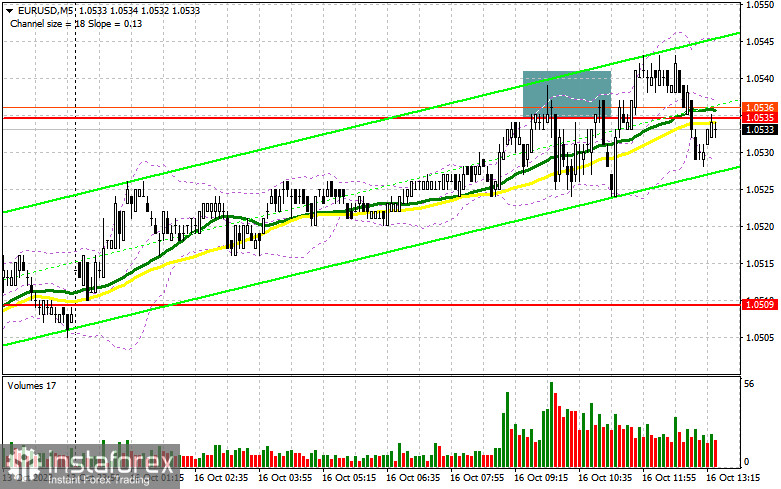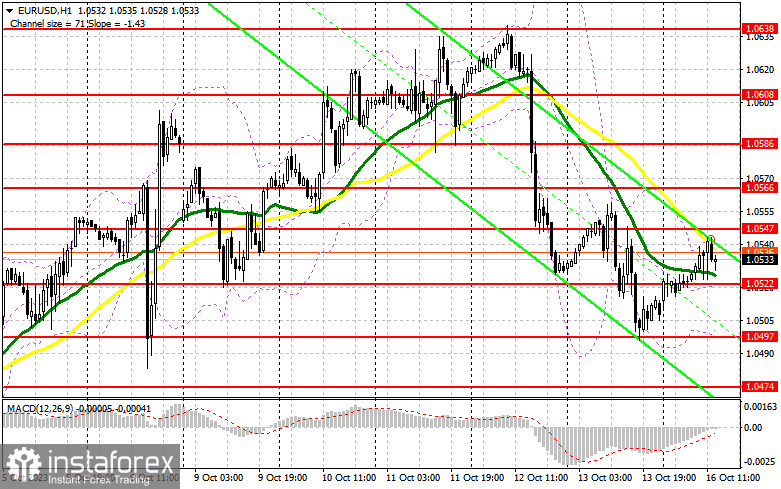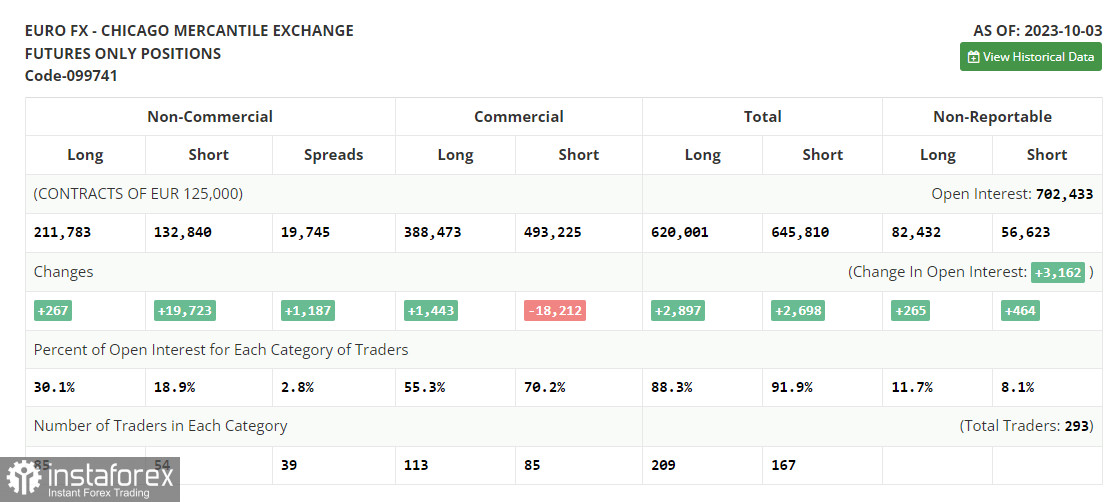In my morning review, I mentioned the level of 1.0535 as a possible entry point. Let's have a look at what happened on the 5-minute chart. A rise to this level and its false breakout generated a good entry point into short positions. However, due to low market volatility, the pair was unable to develop a serious decline. After a fall of 10 pips, we saw resurging demand for the euro. That is why the technical setup for the second half of the day has been revised.

For long positions on EUR/USD
With the upcoming release of the Empire State Manufacturing Index and a speech by FOMC member Patrick T. Harker, a significant volatility spike is unlikely. Thus, I expect the pair to trade within the sideways channel. If the pair declines, I will act after witnessing a false breakout near the new support level at 1.0522, just above which the moving averages currently favor the bulls. A primary target is the newly established resistance at 1.0547. Only its breakout and a top-down test, alongside dovish rhetoric from the Fed officials, would provide momentum towards 1.0566. My ultimate target is found at 1.0586 where I will be locking in profits. In the scenario where EUR/USD drops and there is no activity around 1.0522 by the afternoon - which represents the middle of the sideways channel - pressure on the euro will resume, leading to a significant downward movement. In this situation, only a false breakout at 1.0497 will signal a market entry. I would initiate long positions immediately on a rebound from 1.0474, targeting a daily upward correction of 30-35 pips.
For short positions on EUR/USD
If sellers remain active, I expect them to emerge during the latter half of the day around 1.0547. A false breakout at this level, coupled with strong US data, will serve as a signal to sell the euro, aiming for the channel's midpoint at 1.0522. A breakout and consolidation below this range, followed by a bottom-up retest, will generate another sell signal, targeting a low of 1.0497. My ultimate target will be the 1.0474 area where I will be locking in profits. If the EUR/USD moves upward during the American session and bears are absent at 1.0547, buyers will attempt to reclaim the market. In such a scenario, I will postpone going short until the price hits the resistance at 1.0566. I may consider selling there but only after a failed consolidation similar to the above mentioned pattern. I would initiate short positions directly on a rebound from a high of 1.0586, targeting a downward correction of 30-35 pips.

COT report
The Commitments of Traders report for October 3 recorded a minimal rise in long positions and a sharp increase in short positions. Apparently, after the central banks' meetings, markets realized that interest rates will be raised further in the fight against inflation. This will definitely drive the US dollar higher which is already reflected in the COT reports. Notably, these reports have not yet factored in the changes caused by the recent US jobs data which twice exceeded the forecast. In addition, the military conflict in the Middle East also undermines risk sentiment, thus spurring demand for safe-haven assets such as the US dollar. The COT report indicates that non-commercial long positions went up by just 267 to stand at 211,783, while non-commercial short positions jumped by 19,723, reaching a total of 132,840. As a result, the spread between long and short positions increased by 1,187. The closing price dropped to 1.0509 from 1.0604, further underscoring the bearish market sentiment.

Indicator signals:
Moving Averages
Trading around the 30- and 50-day moving averages indicates a range-bound market.
Please note that the time period and levels of the moving averages are analyzed only for the H1 chart, which differs from the general definition of the classic daily moving averages on the D1 chart.
Bollinger Bands
If the pair declines, the lower band of the indicator at 1.0497 will act as support.
Description of indicators:
• A moving average of a 50-day period determines the current trend by smoothing volatility and noise; marked in yellow on the chart;
• A moving average of a 30-day period determines the current trend by smoothing volatility and noise; marked in green on the chart;
• MACD Indicator (Moving Average Convergence/Divergence) Fast EMA with a 12-day period; Slow EMA with a 26-day period. SMA with a 9-day period;
• Bollinger Bands: 20-day period;
• Non-commercial traders are speculators such as individual traders, hedge funds, and large institutions who use the futures market for speculative purposes and meet certain requirements;
• Long non-commercial positions represent the total number of long positions opened by non-commercial traders;
• Short non-commercial positions represent the total number of short positions opened by non-commercial traders;
• The non-commercial net position is the difference between short and long positions of non-commercial traders.





















